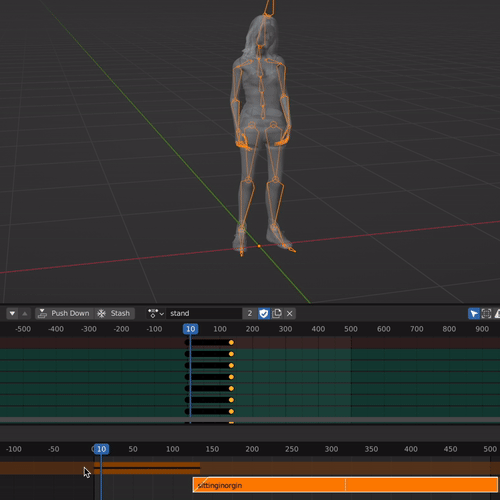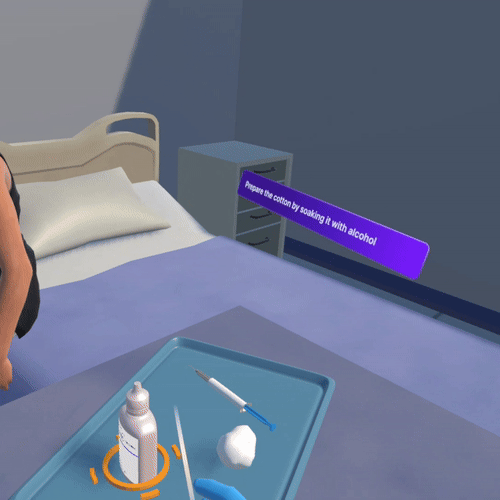Toothy -Virtual Dental Training Simulation
- Role:
- Project Manager, Interactions and Prototyping
Overview
A VR-based training app designed to help build skills and confidence among dental students through immersive, hands-on training in dental implant procedures.
Tools
Unity, ShapeXR, Figma, Blender
Year
2025
Prototype Phase (MVP)
Impact
Delivered a professional VR simulation app for dental implant training. It was positioned as a cost-effective, scalable training solution for dental institutions.
This project was an excellent demonstration of my ability to lead a team, solve technical challenges, and deliver a polished product under tight deadlines. It furthered my understanding of XR development and its potential in transforming professional training.
The problem we tried to solve?
Limited Opportunities
limited availability of real patients, ethical concerns, and logistical constraints, leaving them underprepared for real-world scenarios.
Fear of Mistakes
The fear of making errors or harming patients inhibits students’ confidence and willingness to actively engage in learning injection techniques.
High-Pressure
With supervisors and peers observing and patient anxiety or discomfort during the procedure, it often hampers students’ ability to focus and perform accurately.
High-Pressure
The high-pressure atmosphere of real-life training, with supervisors and peers observing, often hampers students’ ability to focus and perform accurately.
Limited Resources
Access to high-quality anatomical models, medical tools, or training spaces is often restricted, limiting the scope for consistent practice.
Limited Resources
Access to high-quality anatomical models, medical tools, or training spaces is often restricted, limiting the scope for consistent practice.
Inconsistent Instruction
Variations in the quality of guidance and feedback across instructors create gaps in knowledge, making it difficult for students to standardize their technique.
Solution
We overcame these challenges by creating an immersive VR training prototype that provides unlimited hands-on practice in a safe and controlled environment.
Provided guided step-by-step instructions, ensured uniform learning through intuitive UI and interactive elements, and replicated realistic scenarios with accurate spatial design and user-friendly interactions.

Scalable Training
Helping multiple students to participate simultaneously without limitations

Interactive and Engaging
Students actively participate, making learning more effective and enjoyable.

Unlimited Practice
Repeat many times as needed, building confidence and muscle memory.
XR Prototype | Unity
Figma
I optimized the UI for the pre-injection survey in Figma to evaluate students' foundational knowledge before the practical test, ensuring they understand critical steps such as site selection, injection angle, and patient preparation, and also created step-by-step instructions to show on the test scene.
Blender
Integrated multiple animations into my patient model using Mixamo after auto-rigging it and seamlessly combined them using Blender.
Combined the assets from sketchfab and created a hospital environment and exported it to ShapeXr for prototyping.


ShapeXR
Arranged the environment in shapexr to get an idea of how it looks and where to place the main items, such as Syringe, cotton, etc.
I brought the UI Panels and prototyped the Survery Screen to see if it works and made a few changes in Figma to increase the contrast of panels to get more visibility in VR.
Unity
Recreated the scene to closely match the prototype in ShapeXR, allowing users to move around and teleport within the room.
I made the main objects interactive and scripted the process and UI functionality to respond dynamically to user input.
Additionally, I implemented narrative and text-based instructions to guide users effectively.
To enhance the overall experience, I applied post-processing effects, added audio elements, and improved the lighting, ensuring the environment was both engaging and accurate.

User Testing
I did a round of user testing with 5 students from Teesside University who had little experience in VR. This test was to make sure this app helps the students to make there learning easier and overcome there anxitey of injecting there future patients.
What did I learn?
When I talked to the users after the experience, I found that they had been immersed and were able to complete the test.
However, I observed that even after giving audio and text-based instruction, one of the students was aiming to pick what they liked, and it broke the process. and one user suggested giving a timer so students won't take too much time on the process. A major comment was to show a correct angled syringe projection so students can understand how to position the syringe.
Changes Incorporated

Virtual Syringe
Added a hologram of the syringe with the correct angle to examine and learn how to properly position the syringe.

Timer
I set a timer for the entire test, encouraging a quicker and more efficient learning process.

Disabled unwanted item
At each step, specific objects are activated for the user to perform the task, while others are disabled.
HAVE PROJECT IN MIND ?
Let's Talk !
COPYRIGHT © johns 2025. ALL RIGHTS RESERVED.
